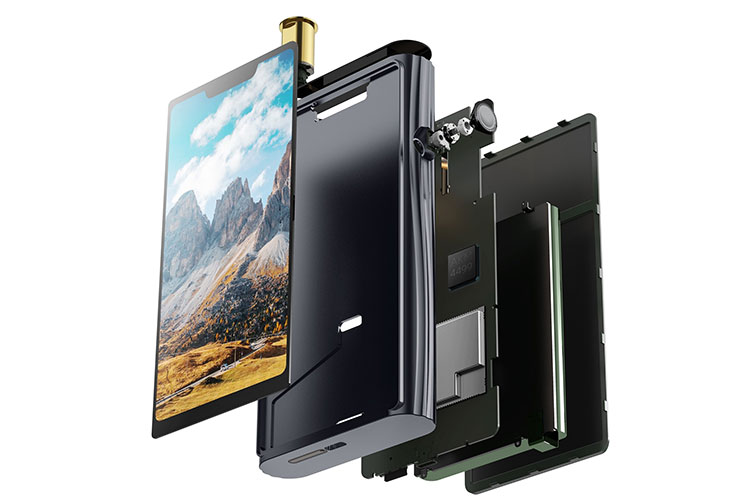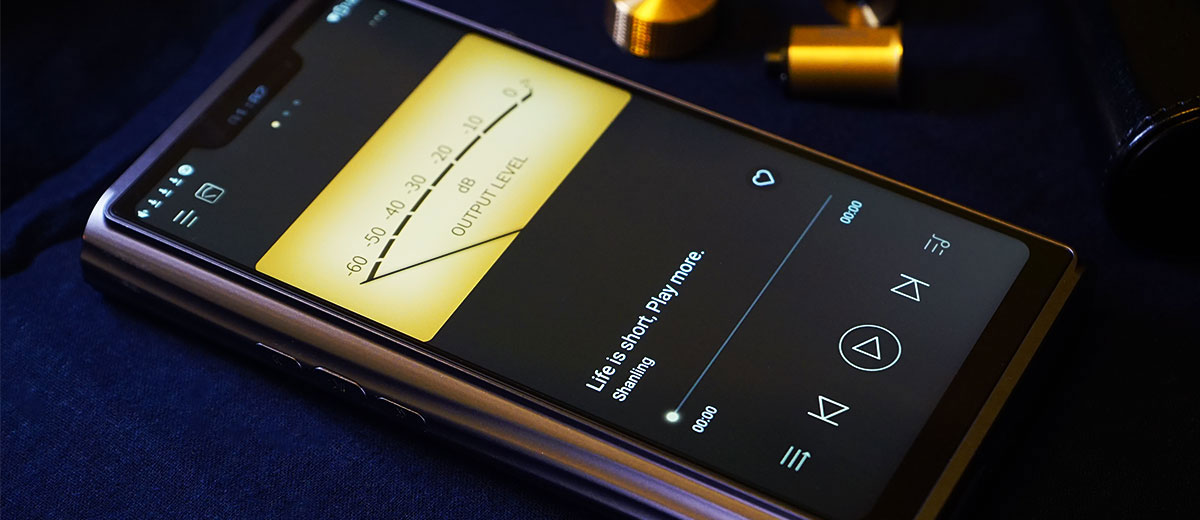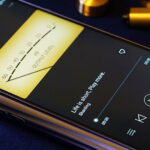In this post, we review the Shanling M9 which is the company’s flagship DAP featuring a dual AK4499EQ DAC, Android 10, and up to 920mW of output power. It is priced at $2799.
Disclaimer: This was sent to us as a sample for our honest opinion. Headfonics is an independent website with no affiliate links or services. We thank the team at Shanling for giving us this opportunity.
To read more about Shanling products we have previously featured on Headfonics click here.
Note, this article follows our latest scoring guidelines which you can read up on here.
And so, we thought the M8 was it, the top dog, the big kahuna from Shanling at least for a short while but nope, here comes the new, albeit limited edition M9 DAP.
There are just 500 of these babies out in the wild, a bit like the iBasso DX300 MAX, so you will have to move fast if you want to grab one, or else it’s a trip to eBay for you. Priced at $2799 and packing some very hard-to-get AKM AK4499EQ DAC chipsets plus some huge internal upgrades this is clearly the most complete DAP from Shanling to date.

Tech Inside
DAC
As a starter, we have a Dual Asahi Kasei Microdevices, (AKM), AK4499EQ chipsets implementation. Like the limited DX300MAX, Astell & Kern SP2000, and the FiiO M15 that use the same discontinued chipsets, the M9 is limited to 500 units worldwide due to shortages caused by the fire at AKM’s plant last year.
The 4-channel, 32BIT decoding chipset is known for its lowest harmonic distortion to competition and is a big leap over the AK4497 scoring -124dB in THD+N performance.
To achieve an extremely dark background, on the M9 you will find white copper shields around the core components to deter EMF and other interference within the circuitry.
In the digital domain, Shanling applied their 3rd generation FPGA technologies along 2 pcs of KDS Japan oscillators (45.1584MHz / 49.152MHz) to reinforce jitter reduction.
Decoding
The Shanling M9 supports 16x MQA, double that of the FiiO M17’s 8x unfold power. As usual, a wide range of codecs is covered including from MP3 lossy up to DSD and a maximum of PCM 32BIT/768kHz and DSD512. For those who have ISO packaged DSD masters it is also smoothly supported by the M9.
The M9 supports Bluetooth 5.0 and transmitting LDAC/ LHDC/ aptX HD/ aptX and SBC. It also supports receiving LDAC and SBC signals. You could beam your high-resolution audio files over to your home setup without sweat or use the M9 as a high-quality receiver.
CPAF Technology
To further boost accuracy in all frequencies, Shanling implemented their CPAF technology, which is based on mathematical models to correct phase errors in the whole audio spectrum caused by LPFs.
Looking closely all components are lined up on one single board for the minimal signal path, the result is enhanced distortion control and dense, pin-point accuracy.
In addition, 3 arrays of regulating circuitries pump the current to the DAC, I/V, and the amplifying stage to ensure a highly stable power supply for all the core components, optimizing the working conditions to yield the best sonic performance.
Amplifier
The essence of Shanling’s device is within its amping circuitry, where Shanling took an unprecedented degree of effort to integrate their tuning and electronics expertise to construct a very powerful and clean signal highway.
The amping stage takes the four output channels from the AK4499EQ chipsets and channels the signal through their version 2.0 OP+BUF architecture, after an I/V stage powered by the ADA4896-2 and LPF OPA1662 from Texas Instruments. The OP BUF stage consists of the ADA4610-2 and the highspeed buffer BUF634a known for its high output.
The output quality is leveraged against selected high precision film resistors of 0.01% tolerance. Panasonic tantalum-polymer caps that are not sensitive to temperature are also used, as well as 8 ELNA RFS capacitors (SILMIC II) encasing innovative silk fiber raw materials.
Power
The M9 can feed very demanding IEMs with 460mW@32Ω on IEM mode and 920mW max @32Ω for balanced IEMs/headphones on its dedicated Turbo mode which doubles the output by hardware means.
The implementation offers more flexibility to match different loads than traditional circuitry designs. You could always switch between the two modes and gain levels to test which level works best for your IEMs.
To specifically address pairing the M9 with headphones, the design incorporates hardware gain and a dedicated voltage step-up stage to boost not just the power, but the resolution also.
The M9 isn’t the most powerful device on paper. Competition such as R8, M17, and the DX300 MAX are all more powerful in this regard, though it is driving some headphones well on the dedicated headphone mode. Especially when focusing on its bass dynamics and resolution in the midrange frequencies.
Design
Screen
The previous generation Shanling players used curved panels which looks amazing. However, they can’t compete with the visual appeals from the M9’s huge 2K, 2160*1080 pixels SHARP panel and cute retro 8-bit LCD display sitting on top. This is a special and fun duo screen layout, something I never have expected.
The main screen has excellent contrast and pixel density. You can look at it really close and it still feels detailed and smooth, somehow even clearer than my 46” TV. The color on top is very vivid and well layered. The refresh speed is fast enough for you to trace fast-moving objects displayed or when scrolling fast.
Truth be told the promotional renderings from Shanling for the M9 are underwhelming and do no justice for these beautiful screens. The smaller screen smartly indicates the volume, time, and sampling rate and looks cool. You can also see the battery level during gameplay or video playback when plugged in power.
Beyond the eye-catching part, there are quite some subtle details on the minimalistic, industrial-styled framework that pays homage to its sibling DAPs. Adorning the top panel and the back are matte glass panels that will give you the same premium feel as if you are handling matte Lalique crystals.
Interchangeable socket
The top right-hand corner of the M9 uses the same user interchangeable output jack system we covered on M8. Whether you blame it for the hindered functionalities or commend its Zen design, the minimalistic approach does reserve more space inside for actual audio components and antennas to be put into the M9.
In practice, the simplicity leaves users to contemplate the rest of the design, and there are plenty of details to ponder while you play your tunes.
Unibody Heat Dissipation Design
After more than half a day playing high-resolution files, the M9 is surprisingly, just warm and far from being hot.
Shanling implemented graphene materials and a Unibody design that dissipate the heat evenly throughout the M9’s metallic framework. This provides better working conditions for the components inside as well avoiding roasting your thigh when carrying the player around.
Aesthetics
Back to the body design. On the muscular body “S” curves are carved, which shapes the M9 to be the most streamlined DAP from Shanling so far. Presented with smooth curvatures, you can feel the determination of Shanling to create a flagship device that transcends functionality through intuitive designs.
At 409g the M9 merely passes as portable though smaller and lighter than the FiiO M17 or the limited edition units from iBasso such as the DX300 MAX. If you are purchasing the official protection case, all curves and design elements on the M9 are beautifully showcased via a leather case that covers the whole body as well as provides extra protection.
I/O
The interchangeable socket system includes a set of 4 output jacks covering 4.4mm, 2.5mm, 3.5mm TRS, and 3.5mm balanced connections with the tools to unplug the sockets. On a side note, you will be able to hot-swap the sockets when the device is on with the whole process can be done within 20 seconds.
The M9 focuses purely on earphone outputs and does not include optical/coaxial outputs. If you have other USB-DACs you could connect them to M9’s USB-C output and the M9 supports OTG devices as well.
Controls
With Android 10 onboard and a fast CPU and 8 GB of RAM, this is possibly the most capable processor implementation I have seen on a DAP to date.
The UI controls feel exceptionally smooth, the physical buttons are intuitive with the volume knob doubling as the on/off button and the navigation controls on the left are accessible by the thumb. You would be able to control the M9 single-handedly albeit with its massive appearance.
Battery
The battery on the M9 is amazing and supports QC3.0 quick charge. Playing WAV files with the Final A8000 plugged in when I wake up, the M9 still has 10% left when I go back to sleep at night.
The huge 8350mAh battery inside is self-explanatory, making the M9 a power beast allowing more than 10 hours playback on balanced mode with 24/96 Flac files.
Memory
The M9 packs in a whopping 256GB ROM and safely puts it ahead of all competing DAPs for onboard memory capacity making it comparable to some higher tier smartphones.
The larger ROM size actually allows more flexibility especially if you want to game on the M9 or to store a big collection of music on the machine.
The M9 indexes the library, load pictures in the album, and move files across internal storage fast as lightning. After putting hundreds of high-resolution albums inside there is still plenty of space.
Packaging and Accessories
Big things come in big packages. The M9 comes inside a lavish, huge wooden box which would make it a good display box to store other IEMs and accessories never mind just the DAP.
In the packaging, you will also find aUSB cable as well as a kit of swappable output jacks inside the leather portable carrying pouch. The interchangeable mechanism supports hot-swapping like hot shoes on cameras, so you could change the jacks anytime without turning off the M9.
Click on page 2 below for Software and Sound Impressions
Click on page 3 below for Pairings and Select Comparisons








